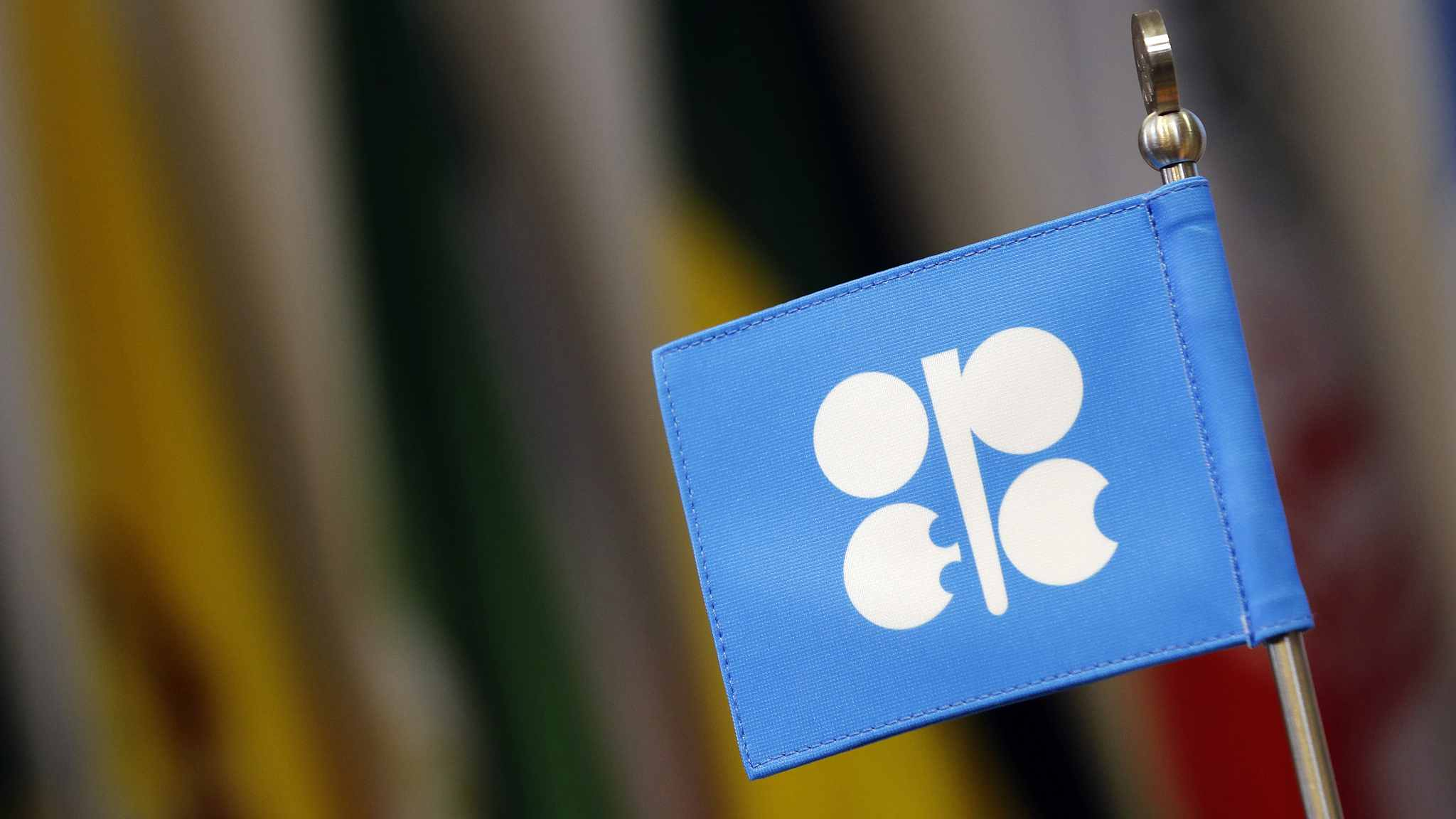
Business
23:03, 06-Dec-2018
Oil dives nearly three percent after OPEC delays output decision
Updated
23:00, 09-Dec-2018
CGTN

Oil fell nearly three percent in choppy trading on Thursday after OPEC and its allies ended a meeting without announcing a decision to cut crude output, and prepared to debate the matter the next day.
The Organization of the Petroleum Exporting Countries met in Vienna to decide production policy in coordination with other countries including Russia, Oman and Kazakhstan.
OPEC tentatively agreed to cut oil output but was waiting for a commitment from non-OPEC heavyweight Russia before deciding volumes.
Russian Energy Minister Alexander Novak flew home from Vienna earlier for talks with President Vladimir Putin in Saint Petersburg. Novak returns to Austria's capital on Friday for discussions among Saudi-led OPEC and its allies.
Saudi Energy Minister Khalid al-Falih said OPEC needed Russia to cooperate and said a decision was likely by Friday evening.

VCG Photo
VCG Photo
“If everybody is not willing to join and contribute equally, we will wait until they are,” al-Falih said.
Market watchers had expected a joint cut of one million to 1.4 million barrels per day (bpd). The OPEC, non-OPEC meeting is set to start on Friday at 1100 GMT.
“All eyes are now fixated on Friday's OPEC+ joint declaration, and a combined output cut of at least one million barrels per day will be required to see a meaningful recovery in oil prices,” said Abhishek Kumar, a senior energy analyst at Interfax Energy in London.
Brent crude futures fell 1.50 U.S. dollars, or 2.4 percent, to 60.06 U.S. dollars a barrel, after dropping to a session low of 58.36 U.S. dollars. U.S. crude futures fell 1.40 U.S. dollars, or 2.7 percent, to 51.49 U.S. dollars, bouncing off a low of 50.08 U.S. dollars.
The benchmarks have slumped more than 25 percent so far this quarter.
Prices found some support after data showed U.S. crude stockpiles declined last week, the first drawdown since September. Inventories had climbed for 10 straight weeks as domestic production grew to a weekly record at 11.7 million bpd, data from the U.S. Energy Information Administration (EIA) showed.
The United States, however, last week became a net exporter of crude and refined products for the first time since at least 1973, exporting a net 211,000 bpd, on the back of a jump in crude exports to a record of 3.2 million bpd, the data showed.
Crude prices have sagged almost a third since October, in part due to concerns about oversupply coming to the fore again as U.S. production rose in tandem with increased output from Saudi Arabia and Russia. The three countries are the world's largest producers of oil.
OPEC's crude oil production has risen by 4.1 percent since mid-2018, to 33.31 million bpd while European equities hit their lowest in two years.
Barclays said in its Global Outlook that “investors need to lower their expectations” and “2019 should be a period of lower returns and higher volatility.” It forecast that the global economy would “slow over the next several quarters” although it added that “not one major economy is near recession.”
Ann-Louise Hittle, vice president, macro oils at Wood Mackenzie, said world oil demand growth is expected to average close to 1.1 million bpd in 2018 and 2019.
“This sits against a backdrop of rapid non-OPEC production growth ... the strength in non-OPEC production creates pressure on OPEC to curtail its output for 2019 from recent levels if oil prices are to remain stable,” Hittle said.
Source(s): Reuters

SITEMAP
Copyright © 2018 CGTN. Beijing ICP prepared NO.16065310-3
Copyright © 2018 CGTN. Beijing ICP prepared NO.16065310-3